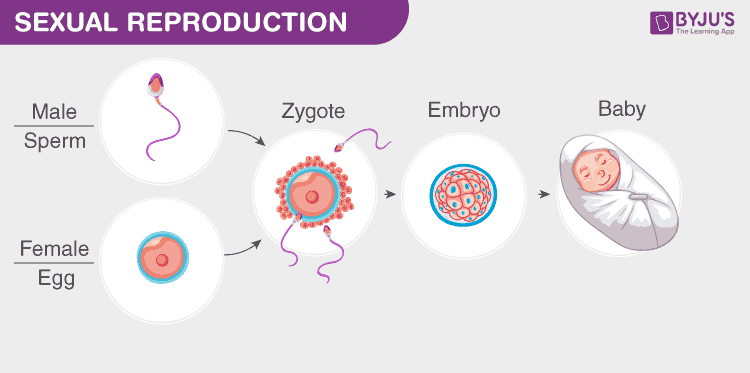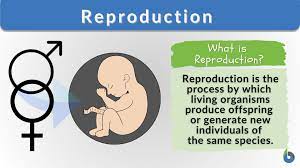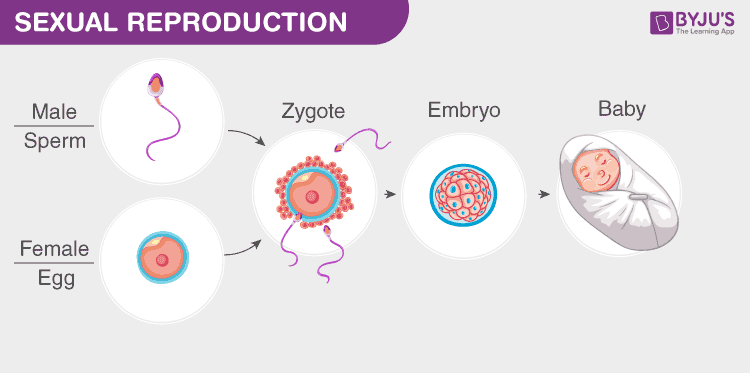
The Miracle of Life: Exploring the Wonders of Reproduction
Reproduction is the fundamental process that perpetuates life on our planet. It's a marvel that we often take for granted but is essential for the survival of every species. In this article, we will delve into the intricacies of reproduction, exploring its importance, the two primary methods - asexual and sexual reproduction, and how it manifests in different organisms.
What is Reproduction?
Reproduction is the biological process by which organisms generate offspring, either through asexual or sexual means. It is a complex and highly regulated phenomenon that is vital for the persistence of species. The ultimate goal of reproduction is to pass on genetic material, thereby ensuring the genetic diversity and adaptability of a species.

Why is Reproduction Important?
Genetic Diversity:
Reproduction introduces genetic diversity, which is crucial for a species' adaptability to changing environments. In sexual reproduction, genetic material from two individuals combines to create unique offspring.
Species Survival:
Reproduction is essential for the survival of species. Without reproduction, a species would eventually become extinct.
Evolution:
Reproduction plays a pivotal role in the process of evolution. Over time, genetic variations accumulate through reproduction, leading to the emergence of new traits and species.
Types of Reproduction:
Reproduction can be broadly categorized into two main types: asexual and sexual.
Asexual Reproduction
Asexual reproduction is a method by which an organism can create offspring that are genetically identical to itself. This process doesn't involve the fusion of specialized reproductive cells, as in sexual reproduction, but instead relies on the duplication of existing genetic material.

Binary Fission
Binary fission is a common method of asexual reproduction, primarily observed in unicellular organisms like bacteria and archaea. These single-celled organisms replicate by splitting into two genetically identical daughter cells. This simple process allows for rapid population growth in favorable conditions.
Budding
Budding is another form of asexual reproduction, often seen in organisms like yeast and hydra. In this process, a small outgrowth or "bud" develops on the parent organism and eventually detaches to form a new individual. It's a method that combines simplicity with efficiency, allowing for the continuous production of offspring.
Regeneration
Certain animals, such as starfish and planarians, possess the remarkable ability to regenerate lost body parts. When a part of their body is damaged or severed, they can regrow it through a process of regeneration. This not only aids in survival but also provides valuable insights into tissue repair and healing.
Vegetative Reproduction
Plants employ vegetative reproduction to propagate themselves. Runners, rhizomes, and plant cuttings are common examples. Through this method, new plants sprout from existing plant parts, creating genetic copies that maintain the characteristics of the parent plant. It's an important technique in horticulture for the rapid multiplication of desirable plant varieties.
Sexual Reproduction
Sexual reproduction is a more complex method that involves the fusion of specialized reproductive cells, often referred to as gametes. The union of these gametes results in offspring with a unique combination of genetic material, promoting genetic diversity within a species.

Fertilization
Fertilization is the key event in sexual reproduction. It occurs when a male's sperm cell fertilizes a female's egg cell, forming a zygote. This process can take place internally, within the female's body, or externally, depending on the species. Fertilization is a moment of genetic recombination, creating offspring with distinct genetic traits.
Development of the Embryo
Once fertilization has taken place, the zygote begins to divide and develop into an embryo. This process follows a specific sequence of stages, with each stage carrying unique biological significance. The intricate development of the embryo is a testament to the wonders of life.
Gestation
In mammals, such as humans, gestation plays a vital role in the development of the embryo. The growing embryo is nurtured within the mother's body, often protected by a specialized organ - the placenta. Gestation varies greatly between species, with some requiring just a few weeks, while others may need several months.
Birth
The culmination of gestation is birth, the event that brings a new life into the world. Species exhibit various birthing methods, with some giving live birth (viviparity), while others lay eggs (oviparity). Witnessing the miracle of birth underscores the significance of reproduction in continuing the circle of life.
Reproduction in Different Organisms
Reproduction in Plants
Plants have evolved diverse strategies for reproduction. From pollination and seed production to asexual methods like runners and bulbs, each plant species has developed unique ways to ensure its survival and growth.
Reproduction in Animals
The animal kingdom showcases an array of reproductive methods. Insects employ intricate mating behaviors, fish lay eggs in aquatic environments, amphibians undergo metamorphosis, and reptiles often have elaborate courtship rituals. Each species has adapted its reproduction to its environment and biology.
Reproduction in Humans
Human reproduction is a captivating journey. The human reproductive anatomy, the menstrual cycle, fertilization, and the miraculous process of pregnancy, all contribute to the propagation of our species. Understanding these processes is not only essential for our species' survival but also for family life and societal growth.
In this exploration of reproduction, we've witnessed the remarkable diversity of life's mechanisms to create offspring. From the simplicity of binary fission to the complexity of human reproduction, each method is a testament to the wonder of life. Reproduction is not just a biological process; it's the cornerstone of species survival and evolution, and it's our responsibility to preserve and protect this miraculous cycle.
Appreciate the creator